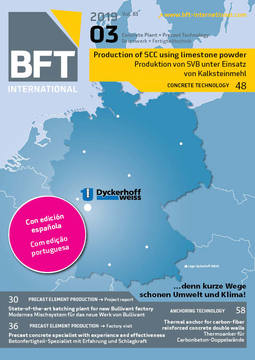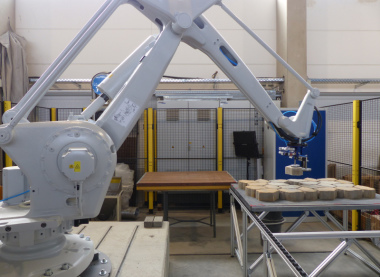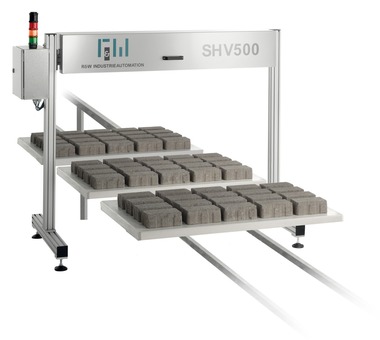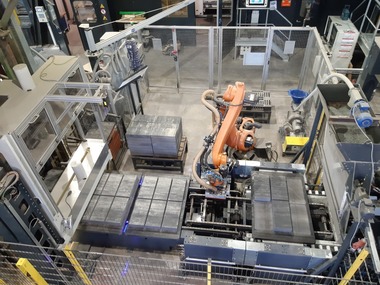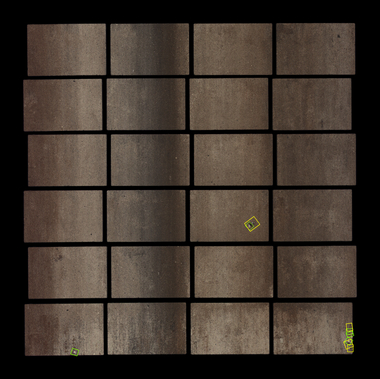Innovation: Quality assurance for concrete blocks
The production of concrete blocks basically takes place on production boards on which blocks with green strength are transported to drying storage. The hardened concrete blocks are removed, on the boards, and are separated. Quality assurance currently follows before the blocks are transferred to the packaging station by an operator of the concrete plant. If no defects are established, the production boards bypass the quality assurance station. If defective blocks must be exchanged, the retention time of the boards is notably influenced by the number of blocks that must be exchanged. When the exchange is handled manually or by manual support gripper systems, the skill and the fitness of the operator plays an essential role. When blocks are exchanged individually, blocks are selected, removed and disposed of, and new blocks are added. Criteria for selecting suitable replacement blocks are block type, contour for irregular products and color in case of color gradients.
This process step has been partly automated with the support of the Employers‘ Liability Insurance Association. Here, the operator selects only the blocks that need to be exchanged on a capacitive touch screen, which can also be operated with working gloves. Suitable replacement blocks are selected from the available exchange stock by robot image processing, and are exchanged by robot.
Parallel running processing can be broken down into the following sub-steps:
Image preparation, contour search
Determination of characteristics, position detection
Coordinate calculation of the most important points
Calculation of the color and texture parameters
Database updating
Control of the availability and determination of product and block types
Identification of the exchange block
Transfer of coordinates to the robot handling system
Automatic exchange
Quality assurance system for concrete block and slab manufacturers
Now as before, the primary target group for economic exploitation of this innovation are the manufacturers of concrete products. The newly developed quality assurance system (QS System) is of significant relevance for concrete block and concrete slab manufacturers, who are required to manufacture to increasingly higher quality. The QS System can be implemented both in production lines with concrete block machines and in so-called slab presses. It ensures product quality and increases throughput, minimizing at the same time heavy manual work and mental stress. The data-supported surveillance of those blocks to be exchanged, and at what time and how frequently, enables monitoring of the production process and statistic evaluation. The end control of manufactured products by the QS System can be handled by more senior and more experienced staff who may otherwise no longer be sufficiently able to handle heavy manual work at this workplace. Utilization of modern data processing and robotics technologies further enhances work by more extensive assignment of younger employees. In addition to cost savings and greater profits from lower levels of sick leave and from an increase in product quality, these benefits partially eliminate the lack of skilled labor.
The market and application potentials of image processing are viewed as cross-sectional technology, also by the supplier and machinery construction industry – and they can assume a critical role in implementation of closed-circle economy. Because image processing systems, apart from efficient and timely surveillance of products during the production process, enable objective and quick identification, as well as non-contact measurement, of building components. Aside from geometric properties, for example, the layer of reinforcement can be established and product-specific information gained. The systems can be individually configured: i.e. easily integrated into existing systems to optimize their day-to-day processes.


